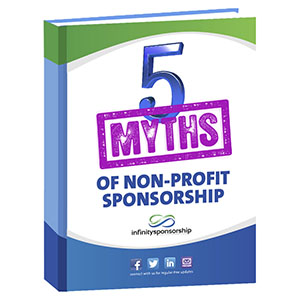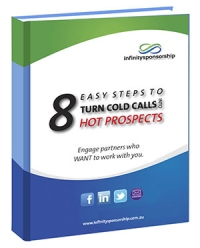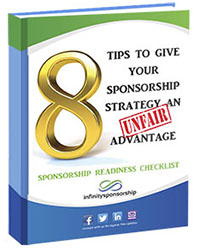Sponsors love receiving cold, generic proposals, don’t they?
More and more companies are telling me that the generic sponsorship letters and proposals that come across their desk often make it only as far as their office bin.
In Australia and New Zealand alone, you are now competing with approximately 700,000 other charities, associations and events also looking for corporate investment, and whilst you probably don’t believe that sponsors ACTUALLY love receiving cold, generic proposals, that’s still the way most sponsorship seekers go about engaging sponsors!
Coupled with the fact that companies are being spoilt for choice in terms of which organisations and sponsorship properties they can align with, the problem is that the majority of non-profits are not putting their ‘best foot forward’ when creating a first impression.
Due to the constant constraints you face every day (time poor, limited resources and budget restrictions), when it comes to seeking and engaging the ideal corporate partner, the temptation might be to send out a swath of generic proposals to businesses you think might be interested in investing in you, so that you can then turn your attention to other important matters whilst you wait for the deluge of calls to come in.
Sound familiar?
The simple truth is that speaking with a company before you send them a proposal will elevate you into the minority of non-profit organisations seeking sponsorship. Taking the time to be curious about what a company might be hoping to achieve by partnering with you and asking what sponsors want, should be the norm, not the exception.
After that first conversation, some companies will be happy to receive a generic-type proposal so they can see who you are and what you offer, before they delve into further details. Others will want specific things from a partnership from the outset – that’s a great opportunity to meet with them, get to know what they are trying to achieve from investing in your organisation – so take the time to tailor your offering.
Calling first works. Apart from the benefits of making a potentially valuable connection that can exponentially increase the chances of your proposal being read; by calling a company first you can learn a host of things:
- What the best timing of sponsorship proposal is – approx 43% of marketing budgets are organised between September-November every year.
- Who is the best person to speak with?
- Whether or not they are even interested in aligning with your organisation or event?
- An indication of what to charge/their budget allocation for sponsorship?
- The future direction of their company/product range?
- What is your potential sponsor hoping to achieve? What are their objectives from a partnership?
- Are they looking for increased brand awareness/ profile/ brand protection?
- Do they want a ‘warm’ introduction to a market they are not currently doing business with?
- How do they hope to influence purchasing behavior to increase their sales?
- How do they value the credibility a partnership offers (a connection with your impeccable brand)?
- Do they understand the value of the ‘perceived’ endorsement a partnership with you provides?
Next time you are considering seeking partners for your event or organisation, don’t be tempted by the false economies of just getting a bunch of generic proposals out the door.
Doing homework saves you time.
I’ll say that again.
DOING. HOMEWORK. SAVES. YOU. TIME.
It’s much better to send proposals out to 10 companies that are expecting them, than have to follow up on 150 generic ones that often don’t reach the decision maker in the first place!
Want to understand (and bust!) the other on-profit sponsorship myths?
I’ve created a free eBook called the 5 Myths of Non-Profit Sponsorship – I’ll send it you to help make sure you don’t make the mistakes that many other non-profits are making when it comes to sponsorship!
Check it out here! https://infinitysponsorship.com.au/free-ebook-5-myths/





